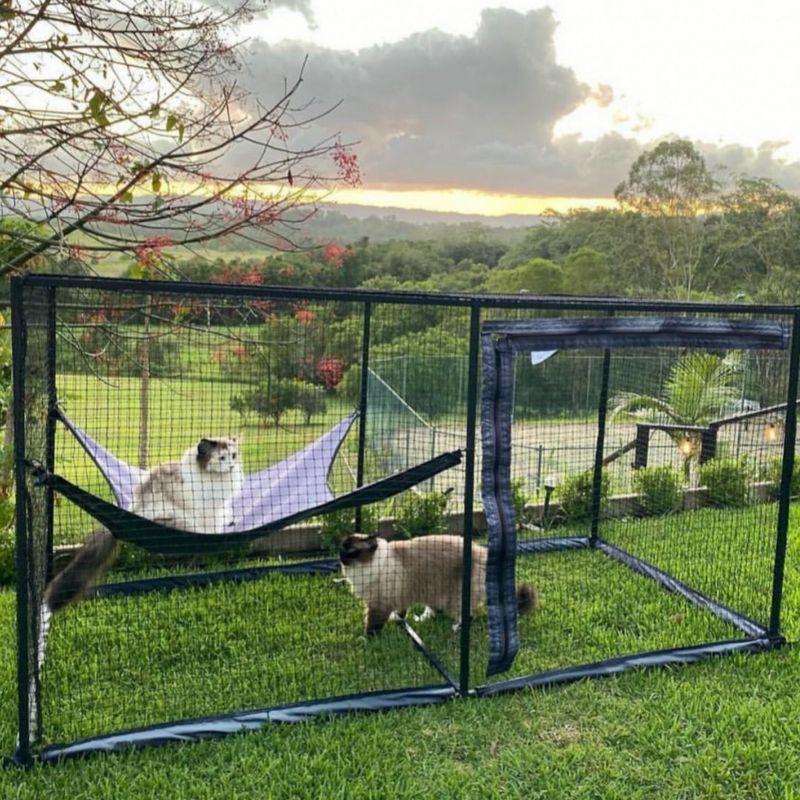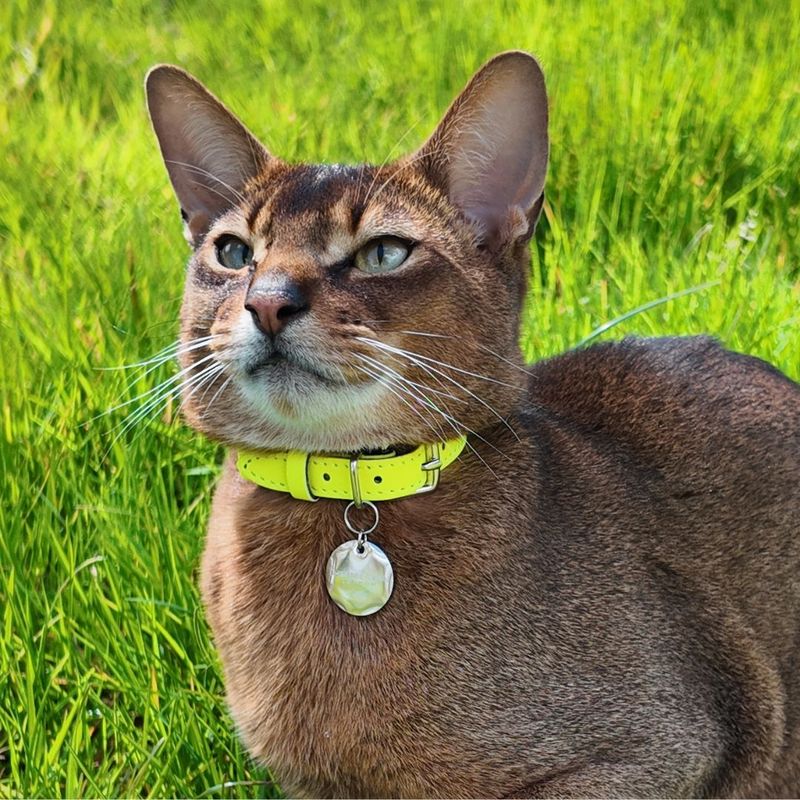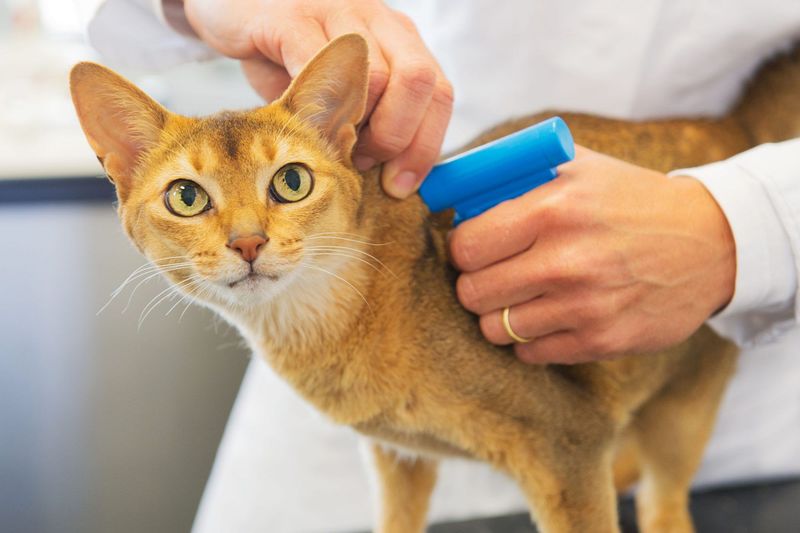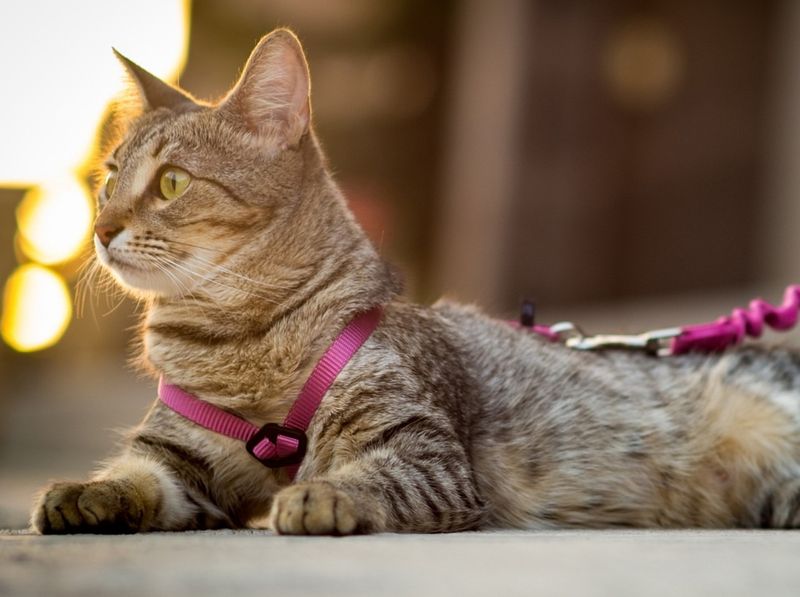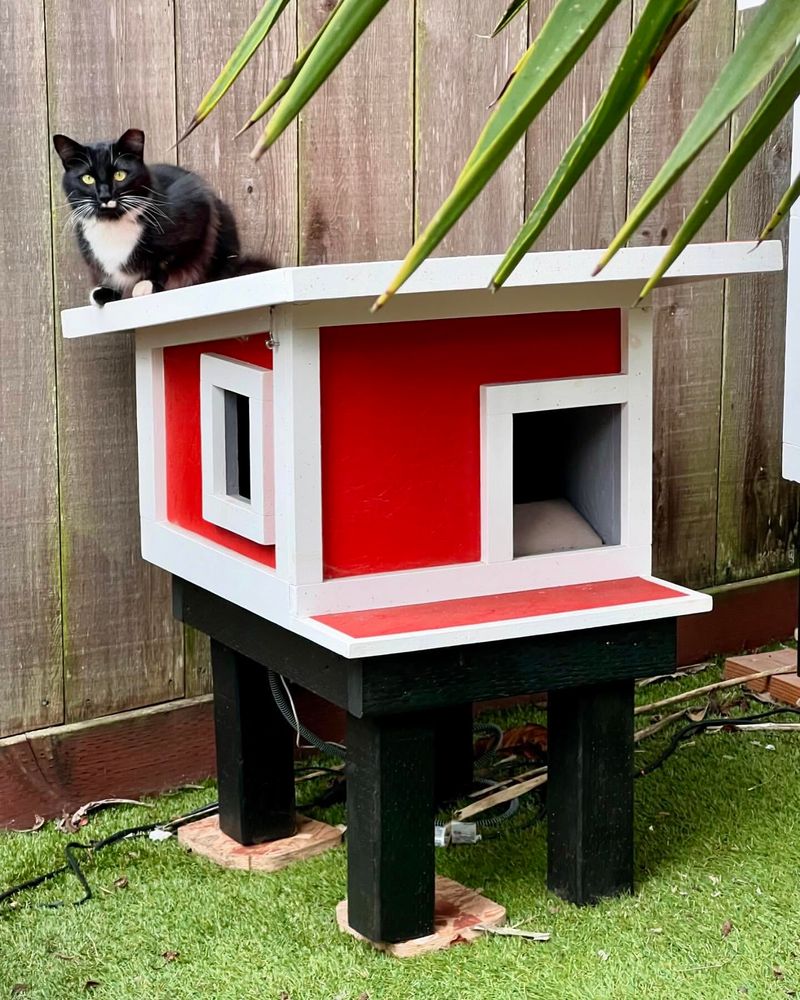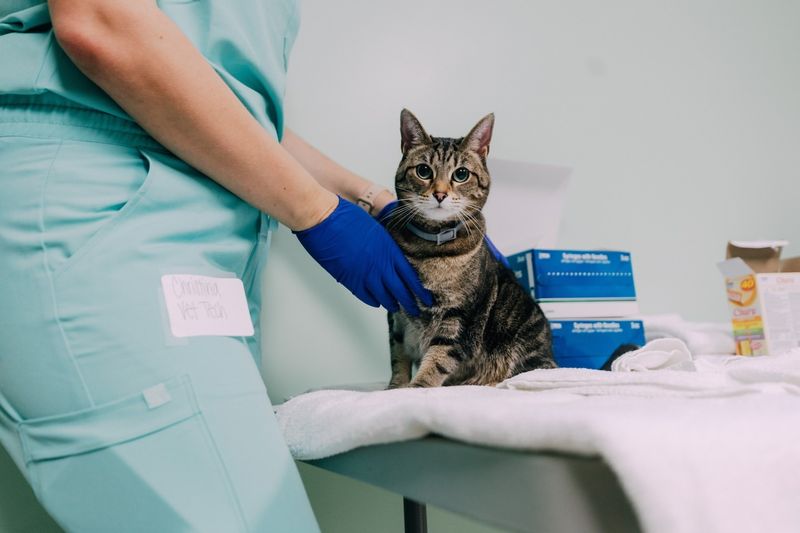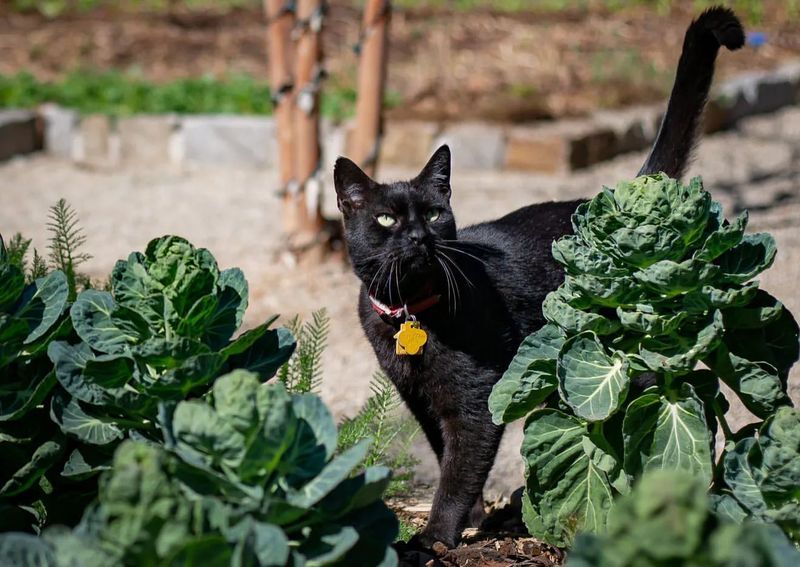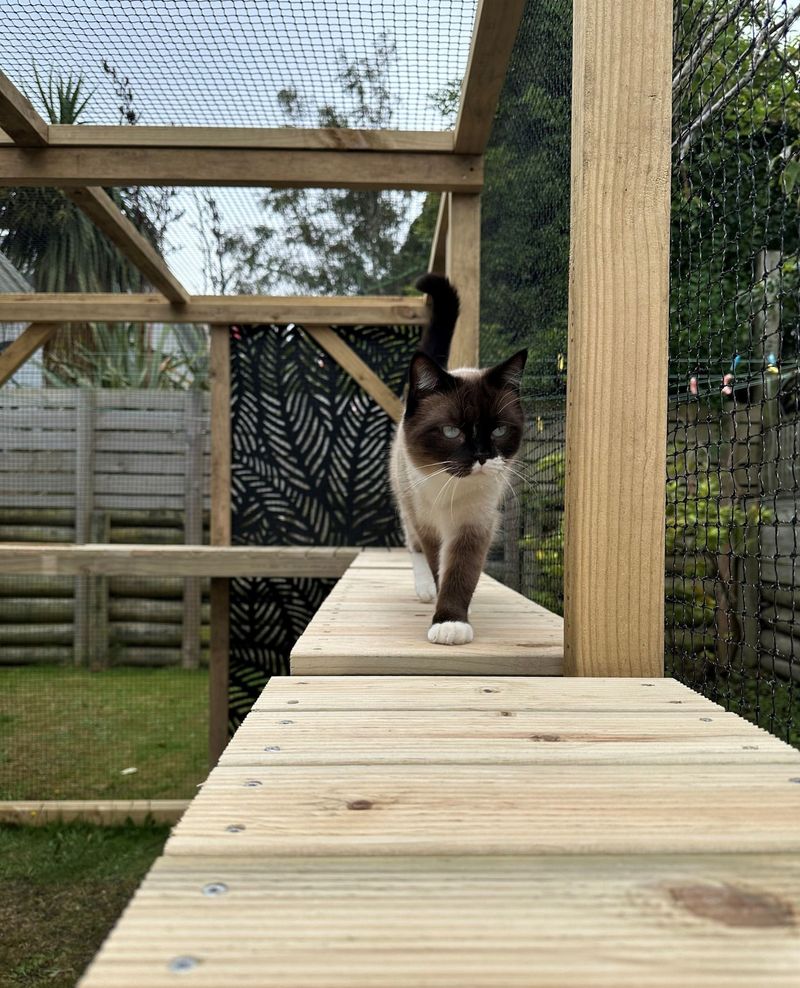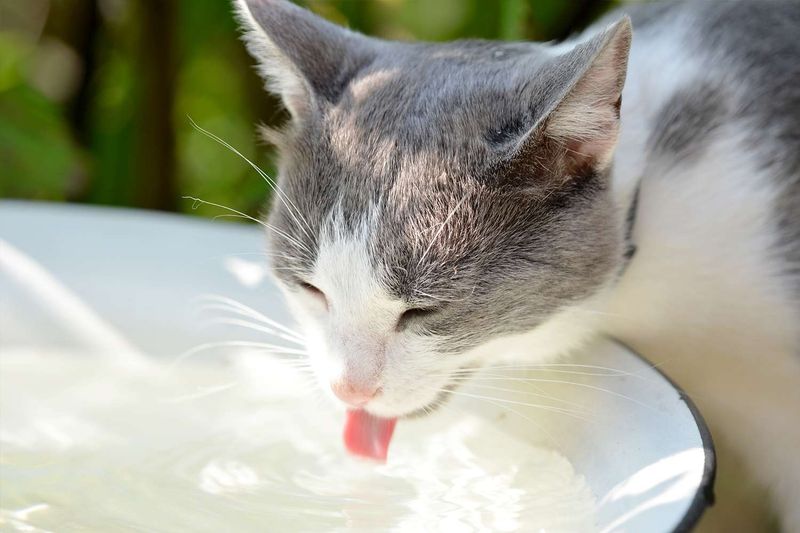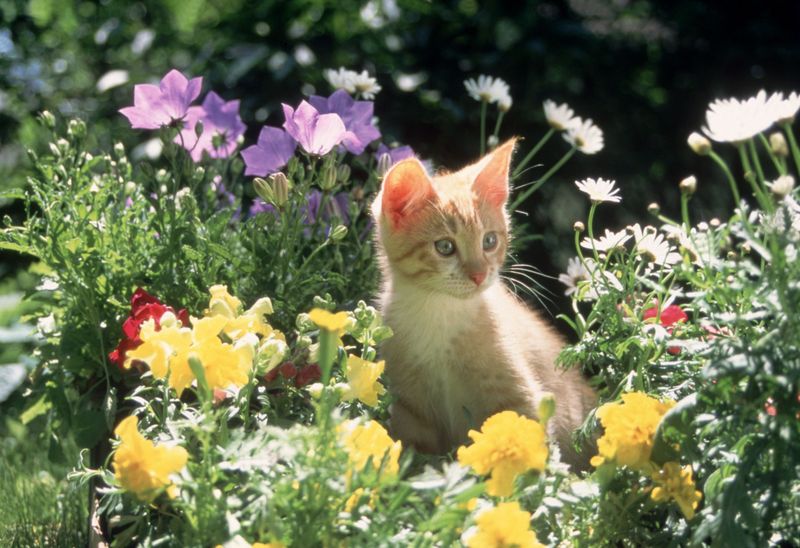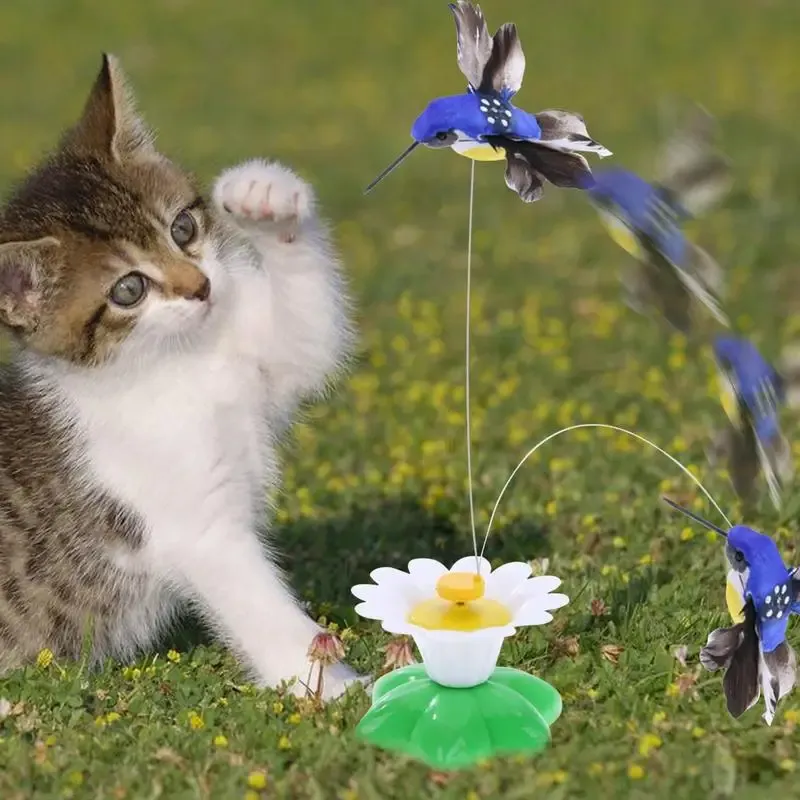📖 Table of Content:
- 1. Build a Safe Enclosure
- 2. Use Reflective Collars
- 3. Microchip Your Cat
- 4. Supervise Outdoor Time
- 5. Train for Recall
- 6. Provide a Secure Shelter
- 7. Regular Health Check-Ups
- 8. Create a Safe Route
- 9. Use Cat-Proof Fencing
- 10. Monitor for Wildlife
- 11. Provide Fresh Water
- 12. Keep Their Environment Clean
- 13. Enrich Their Outdoor Experience
Cats love the great outdoors. The tantalizing rustle of leaves, the thrill of a butterfly chase, and the undeniable allure of sunshine on their fur make the outside world a feline paradise.
But while your adventurous, whiskered friend might revel in their outdoor escapades, the world can also be a risky playground. From traffic and predators to unpredictable weather, there are plenty of challenges that could turn your cat’s outing into a cause for concern.
The good news? You don’t have to choose between keeping your cat safe and letting them enjoy their freedom. With a little preparation and some creative thinking, you can turn the outside world into a safe haven for your furry explorer.
In this article, we’ll cover 13 practical, effective, and downright clever ways to protect your outdoor-loving cat while still allowing them to indulge their wild side.
1. Build a Safe Enclosure
Creating a safe enclosure for your outdoor cats allows them to enjoy the fresh air while keeping them protected from potential dangers. These enclosures, also known as “catios,” can be customized to fit your space and your cats’ needs. Features like climbing posts and cozy resting spots provide a stimulating environment without the risks associated with roaming freely.
When building an enclosure, consider using sturdy materials and ensure it’s escape-proof. Adding some greenery and cat-friendly plants can enhance the space, making it more inviting. This setup not only keeps your cats safe from traffic and predators but also protects local wildlife from your cats.
Regularly inspecting the enclosure for wear and tear ensures ongoing safety. Whether you build it yourself or hire a professional, a well-designed catio can be a perfect solution for outdoor safety.
2. Use Reflective Collars
Reflective collars play an essential role in keeping your outdoor cats safe, especially during low-light conditions. These collars make cats more visible to drivers, reducing the risk of accidents during dawn or dusk when visibility is limited. Along with reflectivity, these collars often come with a breakaway feature that ensures the cat’s safety if the collar gets snagged.
When choosing a collar, opt for one that fits comfortably yet snugly. It’s advisable to check the fit regularly to accommodate any changes in the cat’s size or fur thickness. Adding an ID tag with your contact information provides an additional layer of security, aiding in the quick recovery of lost cats.
Regularly inspect the collar for signs of wear and replace it as needed. Reflective collars can be a simple yet effective tool in keeping your feline friends safe outdoors.
3. Microchip Your Cat
Microchipping is a critical safety measure for outdoor cats, providing a permanent form of identification. Unlike collars and tags, which can be lost or damaged, a microchip remains securely embedded beneath the cat’s skin. This chip contains a unique identification number linked to your contact information, facilitating reunions if your cat goes missing.
The microchipping process is quick and minimally invasive, similar to a routine vaccination. A veterinarian performs it and requires no maintenance once implanted. However, keeping your contact information up-to-date in the microchip registry is vital.
Should your cat be found, any veterinary clinic or animal shelter can scan for the chip, ensuring a swift return. Microchipping offers peace of mind, knowing that your outdoor cat has a reliable means of identification that will always accompany them.
4. Supervise Outdoor Time
Supervising your cat during outdoor excursions is an effective way to ensure their safety. By being present, you can monitor their activities and intervene if they venture too close to potential hazards like busy roads or neighborhood dogs. Supervision also allows you to observe your cat’s natural behaviors, strengthening your bond.
Consider scheduling specific times for outdoor play when you can be fully attentive. This routine not only keeps your cats safe but also provides them with regular interaction and exercise. Engaging them with toys and games can add an extra layer of fun to these sessions.
Be mindful of your surroundings and any changes in the neighborhood that could pose risks. Regular supervised outings can be both a protective measure and an opportunity for quality time with your pet.
5. Train for Recall
Training your cat to come when called provides an essential layer of safety during outdoor adventures. This skill allows you to quickly bring your cat back to safety if they wander too far or encounter a threatening situation. Start by using a consistent call or whistle and rewarding your cat with treats or affection when they respond.
Patience and consistency are key in training. Short, regular practice sessions can yield better results than occasional, lengthy ones. Positive reinforcement will encourage your cat to associate the recall command with pleasant experiences.
Over time, as your cat becomes more reliable in responding, you can practice in various settings to reinforce the behavior. This training not only enhances safety but also strengthens communication between you and your feline friend.
6. Provide a Secure Shelter
Offering a secure outdoor shelter is crucial for protecting your cat from the elements and providing a safe retreat. A well-designed shelter can offer refuge from rain, wind, and extreme temperatures, ensuring your cat remains comfortable while outdoors. These shelters can also serve as a safe haven from potential predators or unfamiliar animals.
Consider building or purchasing a shelter with insulation and weatherproof materials. Positioning it in a quiet area of the yard can increase its appeal, offering tranquility and safety. Ensure the entrance is just large enough for the cat to deter larger animals from intruding.
Regularly check and maintain the shelter to keep it in good condition. Providing a cozy outdoor retreat allows your cat to enjoy the benefits of being outside while having a safe haven to retreat to when needed.
7. Regular Health Check-Ups
Regular health check-ups are vital for ensuring the well-being of your outdoor cats. These visits allow veterinarians to monitor for signs of underlying health issues and update vaccinations, protecting against diseases that cats may encounter outside. A healthy cat is more resilient to the stresses and challenges of outdoor life.
Scheduling routine vet visits every six months can help catch potential problems early. During these check-ups, discuss any changes in behavior or health you’ve noticed, as they may provide crucial insights. Annual dental cleanings can also be part of maintaining overall health.
Preventative care, including parasite control, is essential for outdoor cats. Flea and tick prevention, along with deworming, should be part of your regular care routine. Regular health care ensures your cat remains robust and capable of enjoying their outdoor lifestyle.
8. Create a Safe Route
Creating a designated safe route within your garden can help guide your cats away from potential hazards. By designing pathways with clear boundaries, you encourage cats to stay within safer areas while exploring. Incorporating natural barriers like hedges or low fences can further prevent them from straying into danger zones.
These pathways can be enhanced with stepping stones, plants, or even small water features to make them appealing. Providing hiding spots along the route gives cats a sense of security and a place to retreat if they feel threatened.
Regular maintenance of these paths ensures they remain inviting and free from obstacles. A dedicated route not only adds structure to your cat’s outdoor adventures but also helps in directing their curiosity safely.
9. Use Cat-Proof Fencing
Installing cat-proof fencing is an effective way to keep your outdoor cats safe within your property. These fences are designed with features like angled tops or overhangs that prevent cats from climbing over, thus keeping them contained in a secure area. Cat-proof fences offer the freedom for cats to explore without the risk of wandering into dangerous territories.
When installing fencing, it’s important to choose materials that are durable and weather-resistant. Professional installation can ensure that there are no gaps or weak points that a curious cat might exploit.
Incorporating toys and interactive elements within the fenced area can keep your cat entertained and less likely to attempt an escape. This fencing solution provides peace of mind, allowing your cats to enjoy outdoor activities in a controlled and safe environment.
10. Monitor for Wildlife
Monitoring your outdoor cats for interaction with wildlife is essential in ensuring their safety. Cats are natural hunters, and encounters with wildlife can lead to potential harm or injury. By observing their behavior, you can intervene if they become too interested in chasing birds or squirrels.
Setting up bird feeders at a safe distance and providing ample entertainment can redirect your cat’s hunting instincts. Watching from a window or staying nearby allows you to swiftly address any risky situations.
Keeping an eye on local wildlife patterns can help you anticipate when and where interactions might occur. By being vigilant, you can protect both your cat and local wildlife, fostering a safe and harmonious environment for all creatures involved.
11. Provide Fresh Water
Imagine your cat lapping up fresh water from a beautiful stone birdbath. It’s not only picturesque but essential. Fresh water is a vital part of your cat’s outdoor life.
Cats can get dehydrated, especially when they play and explore all day. A reliable source of clean water helps them stay hydrated.
Consider placing several water stations around your yard. This ensures accessibility and encourages them to drink more. Remember, changing the water daily keeps it appealing and safe for your feline friend.
12. Keep Their Environment Clean
A clean environment is a happy environment, especially for outdoor cats. Keeping your garden or yard free of debris protects them from potential hazards.
Regularly trimming grass and removing loose objects can prevent injuries. It also creates a delightful space for them to explore and satisfy their curiosity.
Use natural repellents to keep unwanted pests away. This not only keeps the space clean but also prevents health issues. A pristine outdoor setting enriches your cat’s daily adventures.
13. Enrich Their Outdoor Experience
Cats thrive on adventure and stimulation. Enrich their outdoor experience with engaging toys and safe plants they can interact with.
Interactive toys like feather wands or balls can provide hours of fun. They stimulate your cat’s instincts and keep them physically active.
Consider planting cat-safe flora like catnip or mint. These not only enhance the garden’s look but also provide sensory delight for your pet. A rich outdoor setting makes your cat’s time outside more exciting and fulfilling.

